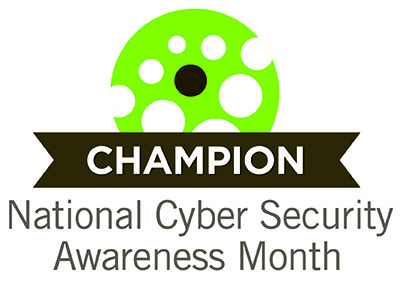What is National Cyber Security Awareness Month (NCSAM)?
October is National Cyber Security Awareness Month which is an annual campaign to raise awareness about cybersecurity. We live in a world that is more connected than ever before. Weather we realize it or not, the Internet touches almost all aspects of everyone’s daily life. National Cyber Security Awareness Month (NCSAM) is designed to engage and educate our community.
NCSAM 2021
DON'T GET SMACked Campaign
A campaign made by The Information Security Office where you can find Social Media Access Controls that will help you ensure that the privacy in the social media platforms that you use daily is set as private and will give you control for the settings of the things that you post online with your friends, family, and to the public.
1. Phishing
Phishing refers to an attack that tricks or fools you into taking an action, such as clicking on a link or opening an attachment. By falling victim you risk having your highly sensitive information stolen and/or your computer infected.
-
Do not open attachments or click on links from entrusted sources
-
Never send personal information in an email
-
Keep you firewall and antivirus software updated
2. The Internet of Things (IoT)
The next big technical advancement is the Internet of Things. Is all about connecting everyday devices to the Internet, devices from doorbells and light bulbs to toy dolls and thermostats. These connected devices can make our lives much simpler; for example, having your lights automatically activate as your phone recognizes when you get close to home. However, like mobile devices, IoT devices also come with their own individual security issues.
-
Connect only what you need
-
Separate Wi-Fi network
-
Update when possible
-
Keep a strong password on your IoT device
-
Limit the amount of information it shares
3. Cyber security for the everyday user
Securing your home network
Almost every home network starts with a wireless network (Wi-Fi). This is what enables you to wirelessly connect any of your devices to the Internet, from laptops and tablets to gaming consoles, and televisions. This mean securing your wireless network is a key part of protecting your home. We recommend the following steps to secure it:
-
Change the default administrator password for your internet router or wireless access point.
-
Change the default name of your wireless network (sometimes called SSID)
-
Ensure that only people you trust connect to and use your wireless network, and that those connections are encrypted
-
Ensure the password people use to connect to your wireless network is a strong one and that it is different from the admin password
Securing your new tablet or smartphone
Do’s:
-
Make sure the OS and software are up to date at all times
-
Download apps from reputable sites and closely review permission requests
-
Make sure to check the feedback from other users before installing the program from an app store
-
Use a security app, if available for your device.
-
Use a strong, complex PIN or password
-
Turn off Bluetooth and other connections when not in use
Don’t:
-
Jailbreak your phone
-
Download apps from third-party app stores and sites
-
Leave your mobile devices unattended in public places
-
Enable your “Wi-Fi ad-hoc mode”
4. Two factor / multi factor authentication
The process of proving who you are is key to protecting your information. Strong authentication attempts to ensure only you can access your information, such as your email, your photos or your bank account. There are three different ways to confirm who you are: what you know (such as a password or PIN) what you have (such as your credit card, smartphone) and what you are (fingerprint, voice, retina).
More: https://securingthehuman.sans.org/newsletters/ouch/issues/OUCH-201509_en.pdf
5. Passwords:
If someone can guess or gain access to your password, they can pretend to be you and access all of your information. Follow the next steps to protect your password.
-
Use strong passwords (or passphrase) that are hard for others to guess
-
Use different password for each account
-
Never share your password with other
More: https://securingthehuman.sans.org/newsletters/ouch/issues/OUCH-201509_en.pdf
| The Information Security Office is a proud champion of the National Cyber Security Awareness Month. |  |
